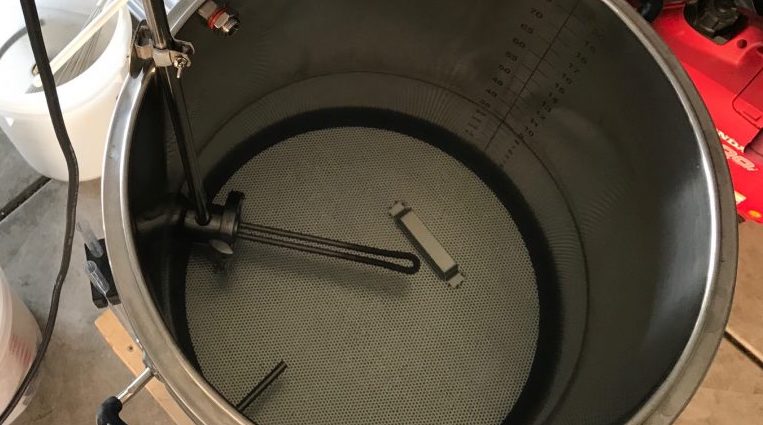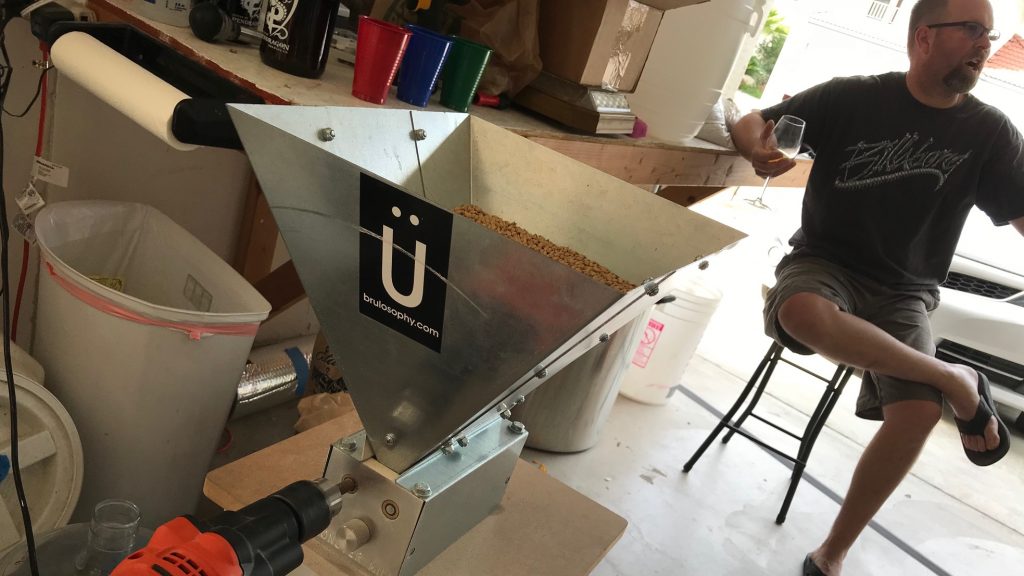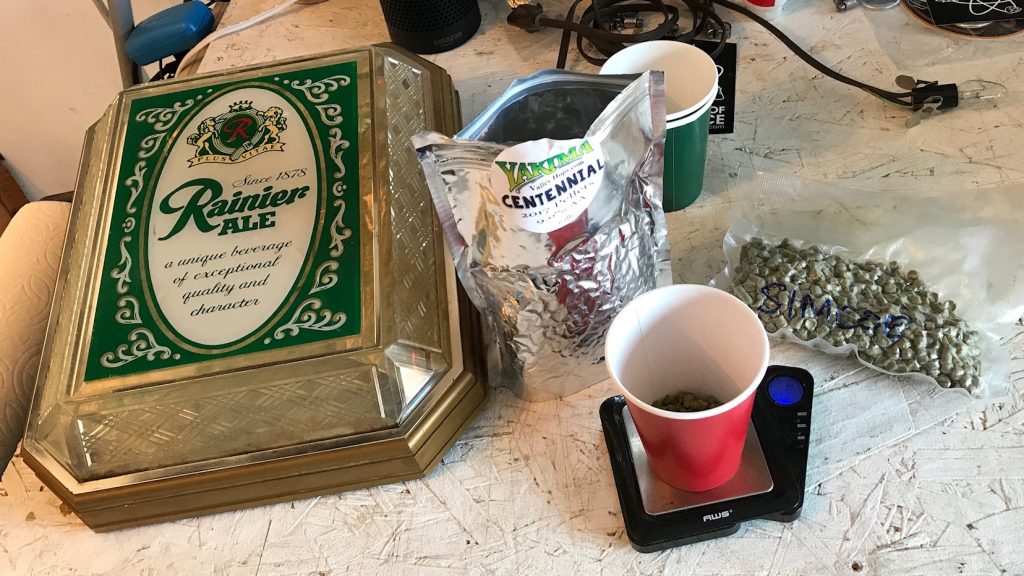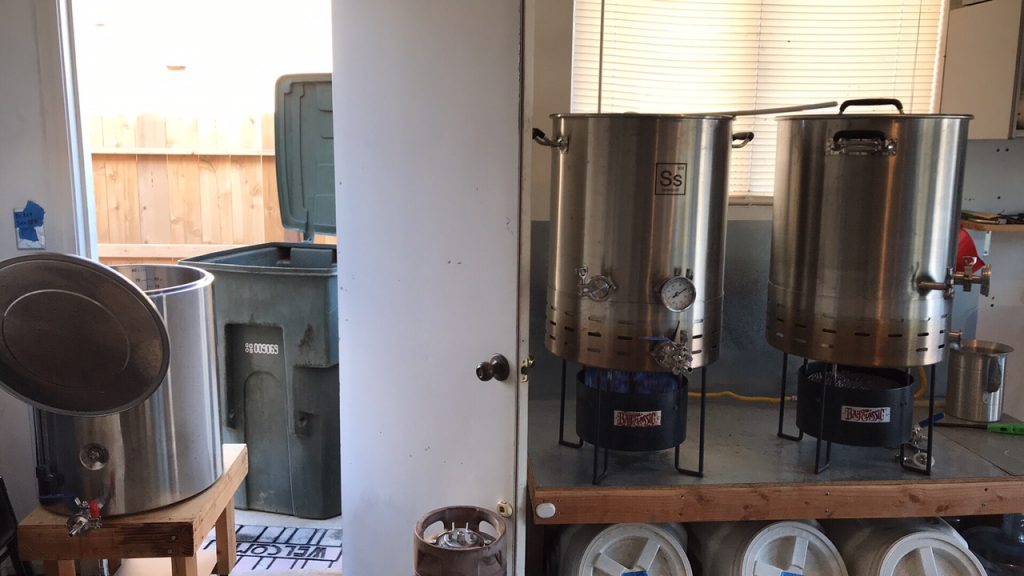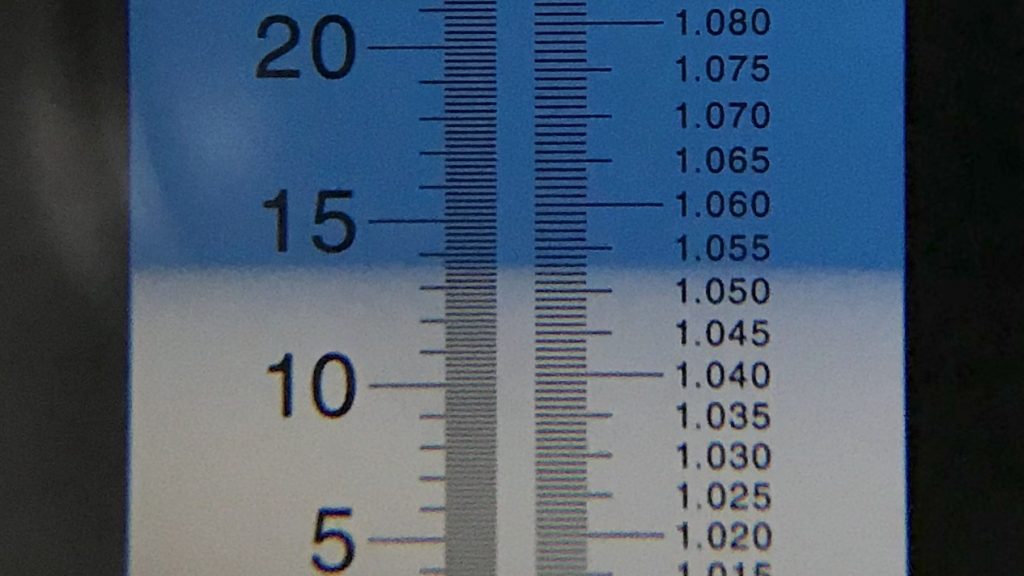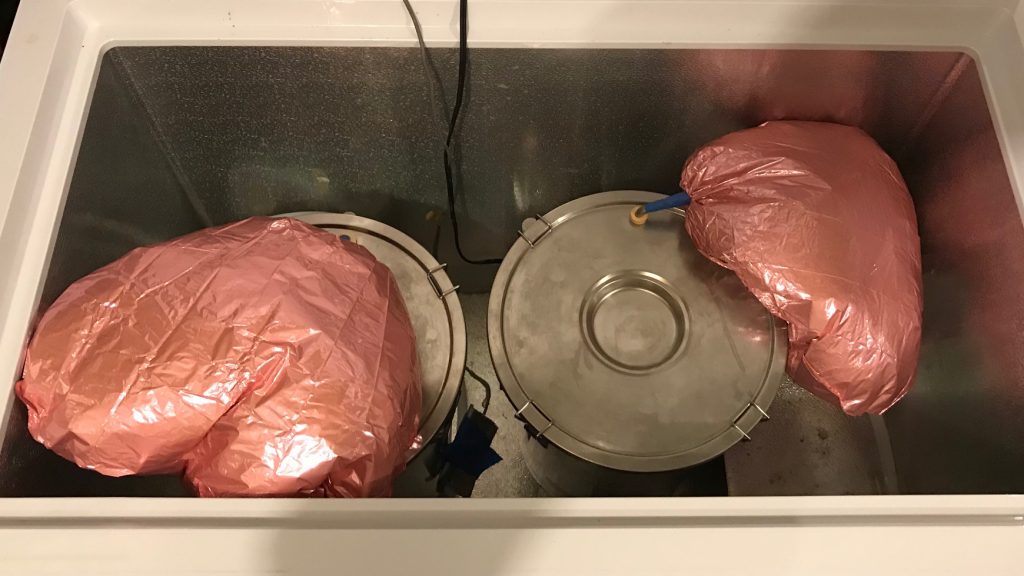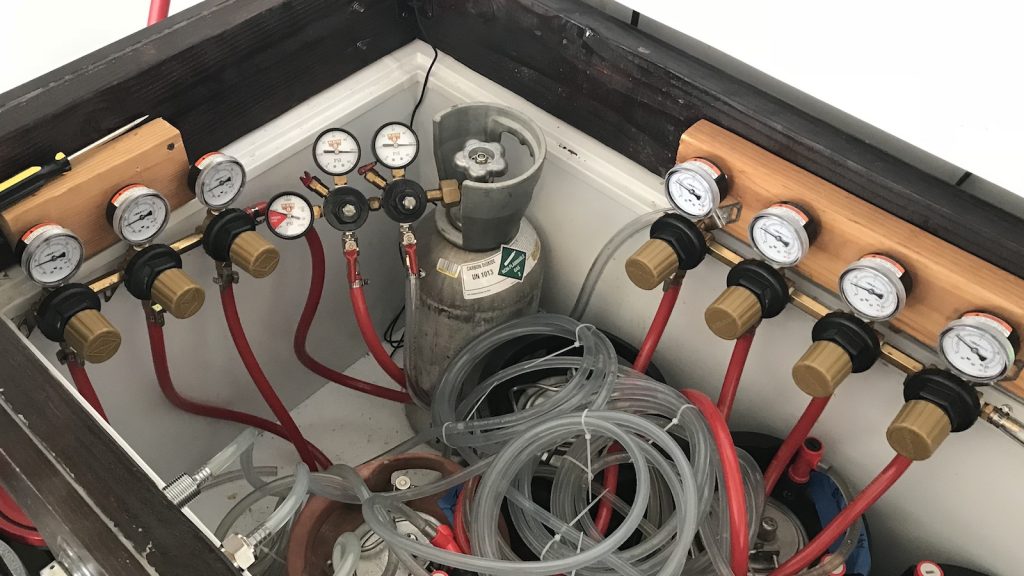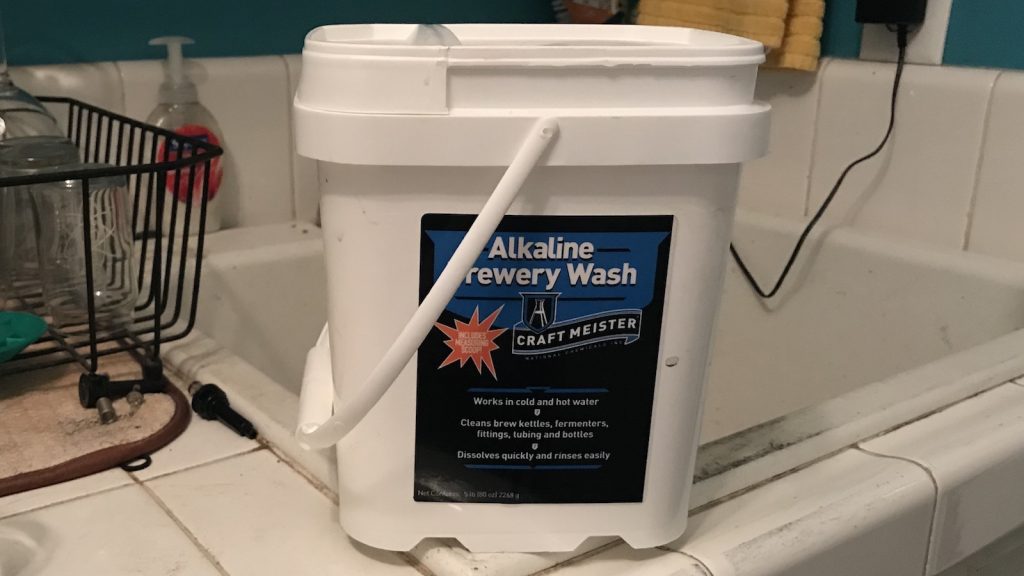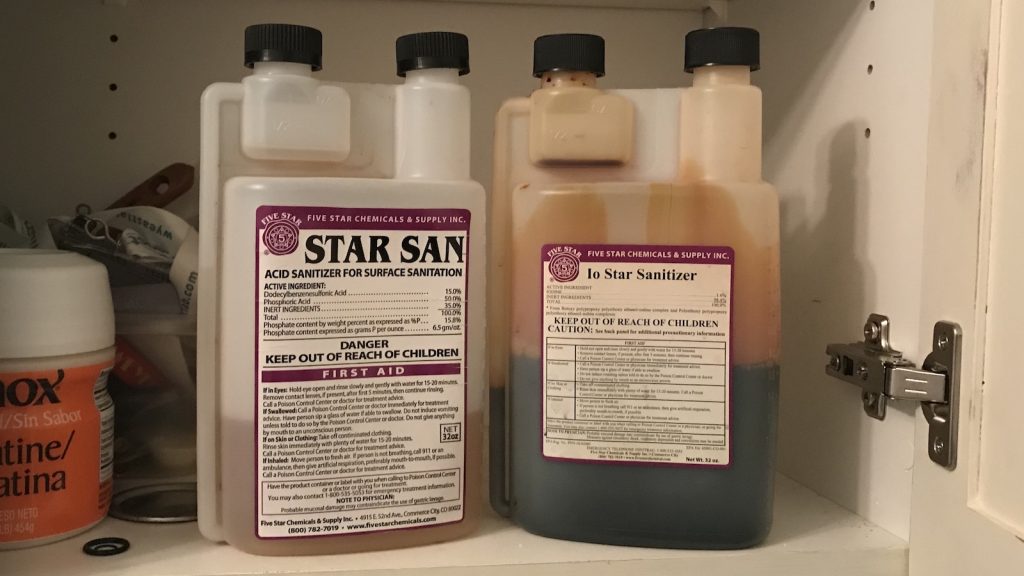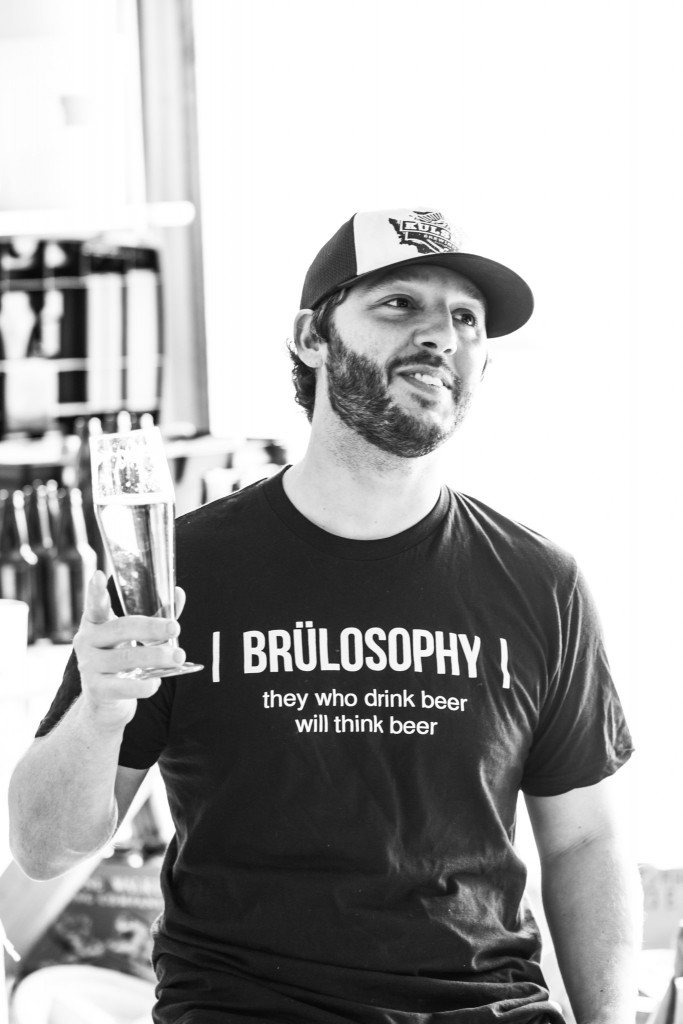 Marshall lives in Fresno, CA with his wife and 3 kids. He began making beer at home in early 2003 while living in Bellingham, WA. Following a move to California, he brewed irregularly until completing graduate school, at which point the obsession really kicked in. While he appreciates most styles, he has a particular fondness for simple lager beers. Marshall started Brülosophy in February 2014 as a place to share and discuss the results of the homebrewing experiments he was regularly performing. He enjoys spending time with his family and dabbles in songwriting when not making beer.
Marshall lives in Fresno, CA with his wife and 3 kids. He began making beer at home in early 2003 while living in Bellingham, WA. Following a move to California, he brewed irregularly until completing graduate school, at which point the obsession really kicked in. While he appreciates most styles, he has a particular fondness for simple lager beers. Marshall started Brülosophy in February 2014 as a place to share and discuss the results of the homebrewing experiments he was regularly performing. He enjoys spending time with his family and dabbles in songwriting when not making beer.
| ABOUT MARSHALL |
How did you get into brewing?
I was working at a group home for autistic teens in 2002 and tended to work the early morning shift. I’d turned 21 earlier that year and was really digging the offerings at Boundary Bay Brewing Company, which at the time was the only brewery in Bellingham, WA. Given this new interest, my ears perked up one morning when my partner showed up 20 minutes late to work with the excuse, “I was bottling my homebrew.”
We spent the better half of our shift talking about homebrewing. When I got off, I swung by my apartment to pick up my roommate then headed straight to North Corner Brewing Supply where I bought the middle-of-the-line equipment kit. We brewed our first batch that night and I was hooked.
What was your first batch and how did it turn out?
The equipment kit I purchased came with my choice of 3 extract with steeping grains recipe kits, I picked the Irish Red Ale. My roommate, Nathan Allen, and I followed the instructions to a T and were even able to avoid a messy boil-over despite nearly maxing out my 4 gallon kettle.
The beer fermented for 2 weeks in a plastic bucket before it was racked to a glass secondary carboy where it was left for another 2 weeks, at which point we bottled. It’s possible my inexperience influenced my perception, but I recall that beer being rather delicious, much more so than I expected, and at least enough to keep me coming back for more.
How did you get involved with Brülosophy?
After getting married in 2004, my wife and I moved to Fresno, CA where I started grad school. My brewing got put on hold with the rare exception of me helping others brew extract batches. After graduating in 2009, I landed a job at a prison where I started carpooling with a cool dude named Chris Padalinski. I also bought a house with a 3 car garage. Driving home one night in December of 2010, I mentioned my love of beer and that I was planning on getting back into brewing. Chris was only an occasional drinker of Guinness at the time, but his curiosity was inspiring and we planned a brew day for the following weekend. This ended up reigniting my passion for the hobby.
After just two extract with steeping grain batches, Chris and I built a converted cooler MLT and switched to all grain brewing using the batch sparge method. We started brewing all the time, usually four to six 5 gallon batches per month, and we also went in together on our first kegerator. The beers we made together improved with each batch and Chris eventually had the idea to track our progress, process, and tasting notes on a blog. We called it Bright Spot Brewing, a reference to an idea we came up with in one of our many deeply philosophical carpool chats.
Toward the end of 2011, Chris and I learned that positions at our workplace were being cut, and given our lack of seniority, we were among the first employees to go. We were offered positions at other locations, and having just purchased my house, I chose the one closest to home while Chris went with a spot that put him closer to an area he and his (now) wife had always envisioned living.
Chris’ absence hit me harder than expected– not only did I lose a killer carpool mate, but my brew partner as well. I knew I wanted to keep homebrewing, but I’d lost interest in brewing for the sake of perfecting recipes and competing. So I started testing shit out.
I built a couple 70 qt converted cooler MLTs for side-by-side batches and began consistently brewing every other weekend. After doing a few poorly controlled experiments, the results of which I shares in online forums under my new-at-the-time brulosopher moniker, I got sick of the yeast rinsing process and came up with the idea to overbuild starters for harvesting. It worked great so I shared it in a popular forum.
After numerous subsequent experiment posts in the following months, people began suggesting that instead of a forum, I compile all of the stuff I was doing on a dedicated website. I was hesitant and held off for over a year, but I eventually started Brulosophy.com in early 2014 with the intention of posting maybe once per month. I quickly realized I enjoyed writing about my experiments as much as performing them and started producing content more frequently. I made some killer friends who shared my interest and… here we are today.
What xBmt has surprised you the most?
Without question, the xBmts that have shocked me the most have been those looking at fermentation temperature with traditional lager yeast strains. I resisted brewing lagers for years because I either didn’t have the ability to keep temperatures cool enough or I didn’t want to tie up my chamber for so long. Going into the first lager fermentation temperature xBmt, I was convinced I’d prove to myself the conventional approach was right for a reason, which left me floored when I couldn’t the beers apart. And even for the xBmts that have yielded significant results, my experience has been that the differences are almost opposite of what I expected– for example, I perceived the Pilsner fermented warm with Imperial Yeast L17 Harvest as being cleaner and more lager-like than the cool fermented version. Crazy.
Have the xBmts influenced your current brewing perspectives?
For sure! The biggest impact the xBmts have had on me is that I worry way less than I used to when it comes to things like mash temperature and length, boil length, and precise fermentation temperatures.
I’ve also come to accept that water chemistry has a much greater impact on beer quality than I previously thought, as I used to buy into the whole “as long as your water tastes good” argument. Not anymore. I adjust water chemistry for nearly every batch of beer I brew these days, all thanks to the xBmt results.
What are your 3 favorite styles of beer?
German Pilsner
There’s nothing about a well made German Pilsner I don’t like. Crisp, bitter, bready malt, spicy and floral hops– delicious! If I see a German Pilsner on tap, that’s what I’m ordering first.
Czech Pilsner
A bit softer on the palate than its German counterpart with a classic Saaz hop character, Czech Pilsner comes in a very close second for me. I’ve a penchant for crushable pale lager, no doubt.
Strong Bitter/ESB
There’s something about ESB that hits all the marks for me, the balanced malt character, bitterness, and English hop aroma coming together to produce a super easy drinking beer. I don’t make many these days, and good commercial examples seem harder to find, but it remains one of my favorites.
What are your favorite ingredients?
Malt: Lamonta American Pale Ale Malt
I’ve been using (and loving) Mecca Grade Estate Malt for awhile now, and while their Pelton Pilsner-style malt is great, I absolutely adore the bready and slightly toasty flavors I get from Lamonta. I’ve even used it in pale lagers and it works fantastic, providing a deliciously rich malt background.
Hops: Tettnang
I wish I could describe more clearly what it is about Tettnang hops that I love so much. Compared to other nobles, this variety seems slightly more pungent with a bit more floral character that works beautifully and all forms of lager.
Yeast: Imperial Yeast L17 Harvest
I’ve used L17 Harvest almost exclusively for my lagers over the last 6 months, fermenting it from 50°F/10°C to 68°F/19°C, and it’s outstanding! While a recent xBmt showed tasters could reliably distinguish between beers fermented with L17 either cool or warm, my experience is that warmer temps actually produce a cleaner, crisper finished product. So good!
What’s your desert island beer?
Chuckanut Brewing Company’s Pilsner, which only barely edges out pFriem Pilsner, both incredibly delicious examples of the style that I could drink happily for the rest of my life. Unfortunately, neither beer is distributed where I live, so I only get to drink them a couple times per year.
What music do you listen to while brewing?
I enjoy various styles of music and tend to choose what I listen while brewing fairly randomly. I’m a huge fan of late 70s/early 80s soft rock (aka Yacht Rock), which is probably what I listen to most often. I also like classic rock (AC/DC, Lynyrd Skynyrd, Tom Petty), modern bluegrass (SteelDrivers, Mandolin Orange), indie electronic (Odesza, Sir Sly), among other things. It’s the rare occasion I don’t have music playing while brewing, or doing anything else for that matter, and that’s usually only because I don’t want to wake anyone up.
What else do you enjoy doing besides brewing?
The only thing I like doing more than brewing is being with my family– my wife and 3 kids are my life, spending time with them is hands-down my favorite thing. Other than that, I like to play the guitar and dabble in songwriting, though I don’t do it nearly as much as I used to.
If you could go back, what brewing advice would you give yourself?
Just because you read it in a book or heard it in a talk or saw it on a video doesn’t mean it’s the only way– try it out for yourself! So much of what I used to believe was absolutely necessary when brewing was learned from outside sources rather personal experience. I’m not saying there’s anything wrong with trusting others, just that I personally get a lot more out of seeing for myself than I do appealing to authority.
| BREWING GEAR & PROCESS |
Like I imagine many can relate, I went through various stages of equipment before finally settling on my current no sparge setup.
Pre-Brew Preparation
I design my recipes in BeerSmith and have started relying on it to determine my water adjustments as well. Once my recipe is set, I print a copy of the details and head out to my garage to prepare the night before brewing. I use tap water that I run through a potable hose and RV filter.
While the water is being filtered, I weigh out my grains using a bakers scale that’s been running strong for nearly 7 years.

Once the full volume of water is in my mash tun, I use a small blade scale to weigh out and add any minerals, which these days is just gypsum and calcium chloride.

I then place my Brew Hardware HotRod heat stick in the water, plug it in to a smart plug, then set the timer to turn on a couple hours before I plan to mash in the following day.
Next, I run the grain through my Monster Mill MM3 directly into an empty bucket.
With everything prepped, I head inside to await brewing the next morning.
Brewing
I’m an early bird and like to get as much stuff knocked out before my family wakes up, so I typically start brewing around 6:00 AM, at which point the brewing liquor is heated to slightly above my target strike temperature by the heat stick. After adding a fabric filter, I stir until strike temperature is reached then add the grains, using my large whisk to ensure no dough balls.
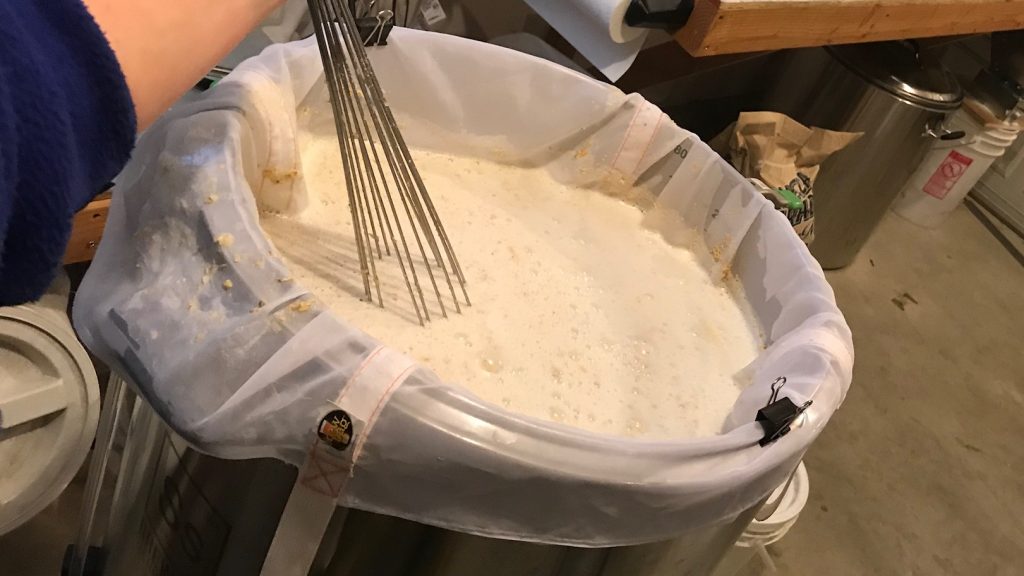
Once the grains are fully incorporated, I use a ThermaPen to check the mash temperature.
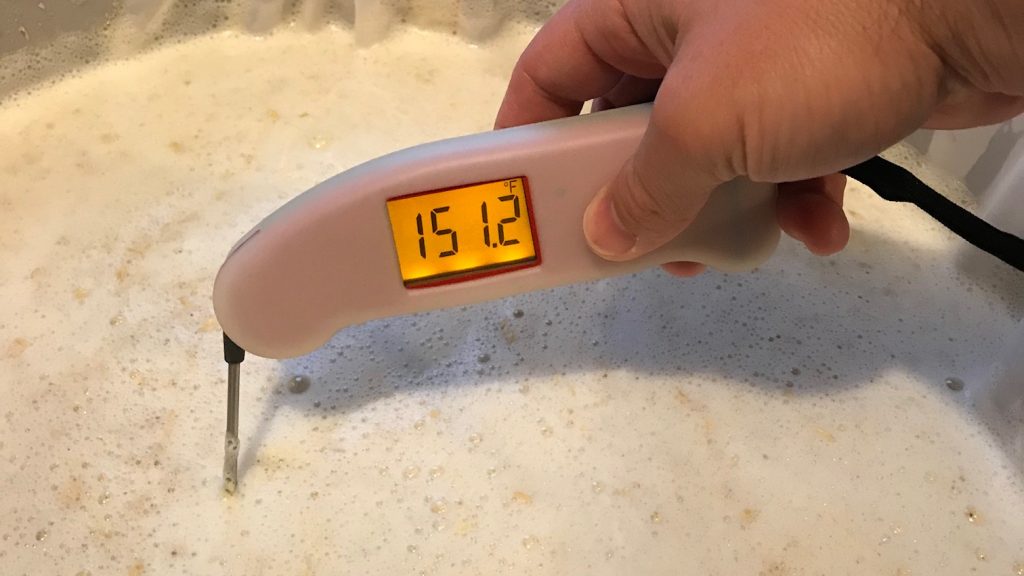
About 15 minutes into the mash rest, I’ll collect a small sample of wort in a glass that’s been in my freezer then let it chill for a few minutes before checking the mash pH.
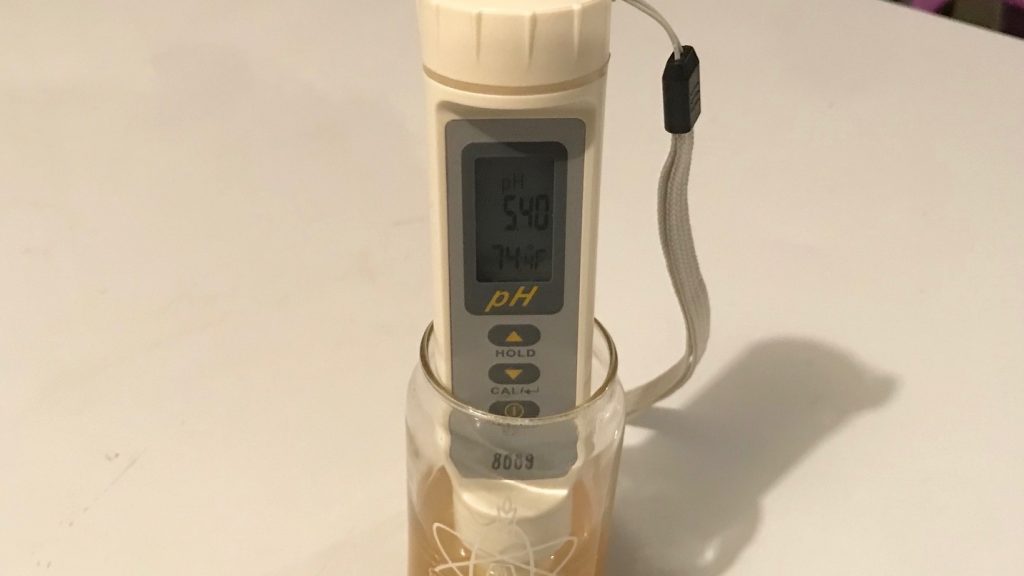
As I wait for the mash to complete, I weigh out my hop additions.
I’ve been using the Ss Brewtech InfuSsion MLT for over a year now, it hold mash temperature incredibly well. Once the mash is complete, I fully open the valve and collect the sweet wort in a bucket.
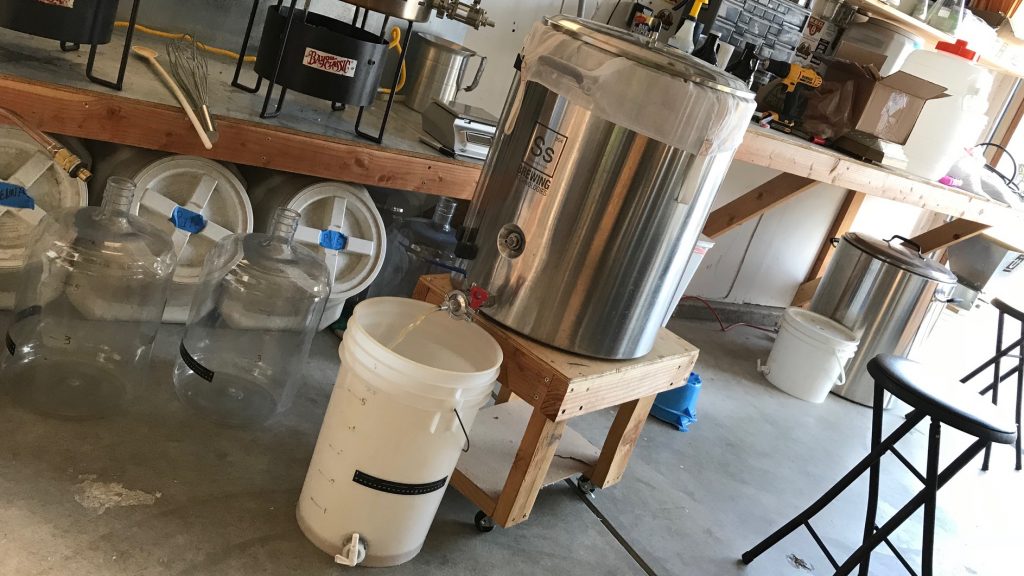
I transfer the wort to my kettle in 4 gallon/15 liter increments, hitting the flame on my Bayou KAB4 burner as soon as the first bit is in the kettle.
I use Fermcap-S to avoid boilovers, adding half of the recommended amount has always worked great for me. I also use some form of kettle fining, adding it with 5 minutes left to go in the boil. At the end of the boil, I chill the wort using my JaDeD Brewing King Cobra immersion chiller, which usually gets me to within about 10°F/5°C of my ale pitching temperture.
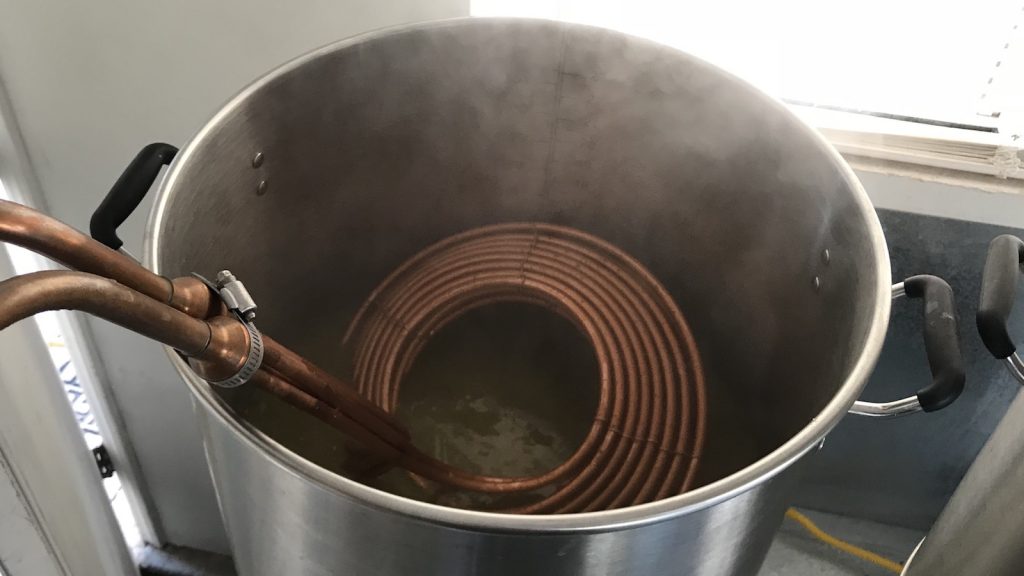
I then take a small sample of the chilled wort to check the OG using my handheld refractometer.
The wort is then transferred to my fermentor of choice, which lately has been either the Ss Brewtech Brew Bucket or Speidel.
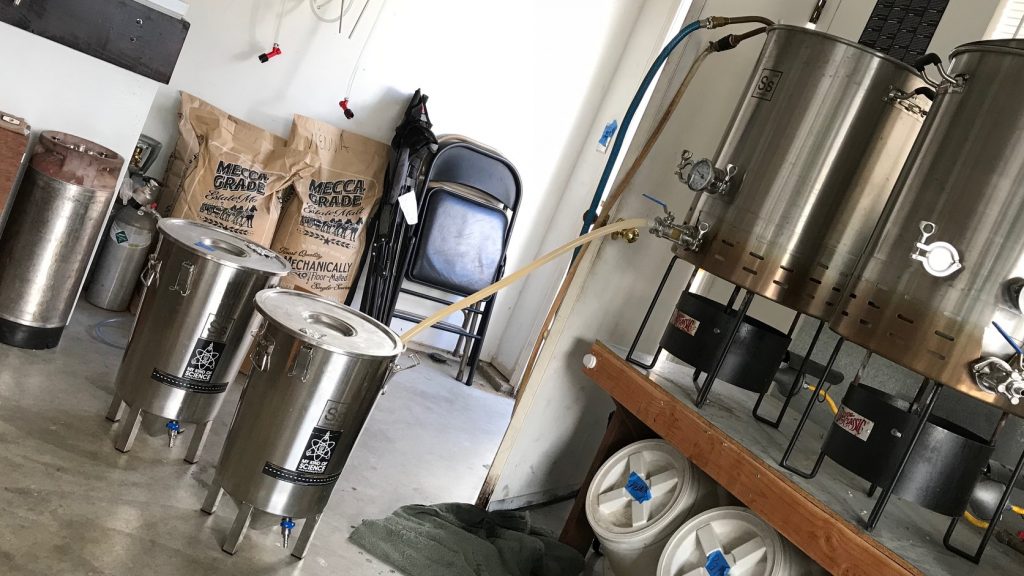
The filled fermentor is then placed in my temperature controlled chamber where the wort is allowed to finish chilling to my desired fermentation temperature before I pitch the yeast. For the last few months, I’ve been using a simple CO2 capture device we call the BrüLoonLock to reduce the risk of oxidation during cold crash.
About 12-24 hours into the cold crash step, I usually fine with gelatin and let the beer sit another 24-48 hours before packaging.
Packaging
When fermentation is finished, I transfer the beer into a CO2 purged keg in an effort to keep oxidation to a minimum.
The filled keg is then placed in my cool keezer and hit with 50 psi of CO2 for 15 hours of burst carbonation, after which I purge the keg and reduce the gas to serving pressure. In my experience, beers are usually well carbonated at this point, though I find they come into their prime after another 2-3 days of cold conditioning.
Serving
I have 7 tap keezer that my wife helped me build a few years ago. All of the faucets are stainless Intertaps, which I’m absolutely a huge fan of.
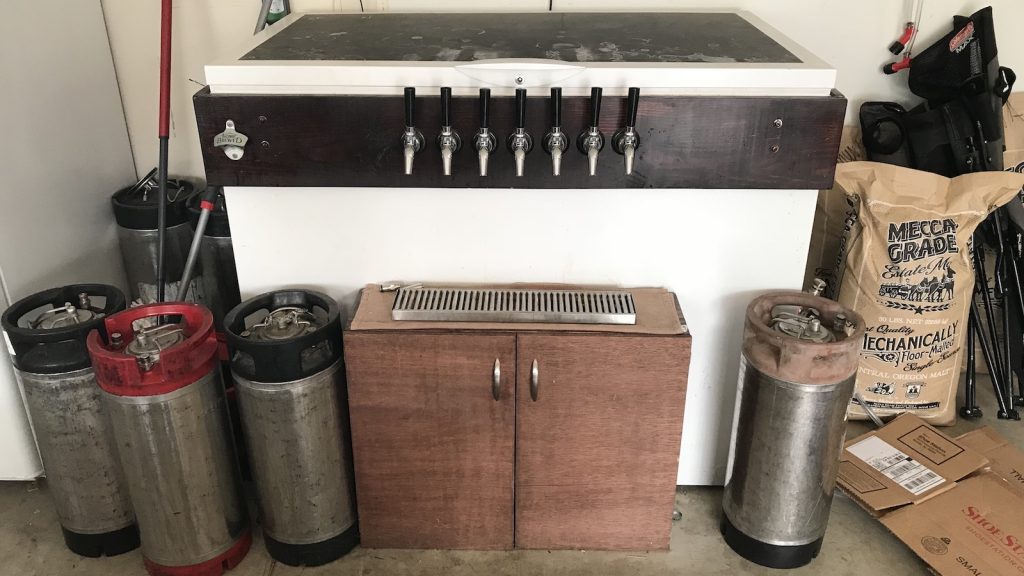
On the inside, I have a dual gauge regulator attached to a 10 lb CO2 tank, each gauge running its own secondary regulator, which allows the pressure to every keg to be independently controlled.
Cleaning & Sanitation
I’m a simpleton when it comes to cleaning and rely on fairly old fashioned methods. I soak my fermentors, kegs, tubing, and pretty much everything else in a cleaning solution of Craft Meister Alkaline Brewery Wash, which I purchase in bulk.
For sanitation, I go back and forth between Star San and Io Star Iodine.
Brülosophy Merch Available Now!
Follow Brülosophy on:
FACEBOOK | TWITTER | INSTAGRAM
If you enjoy this stuff and feel compelled to support Brulosophy.com, please check out the Support Us page for details on how you can very easily do so. Thanks!


